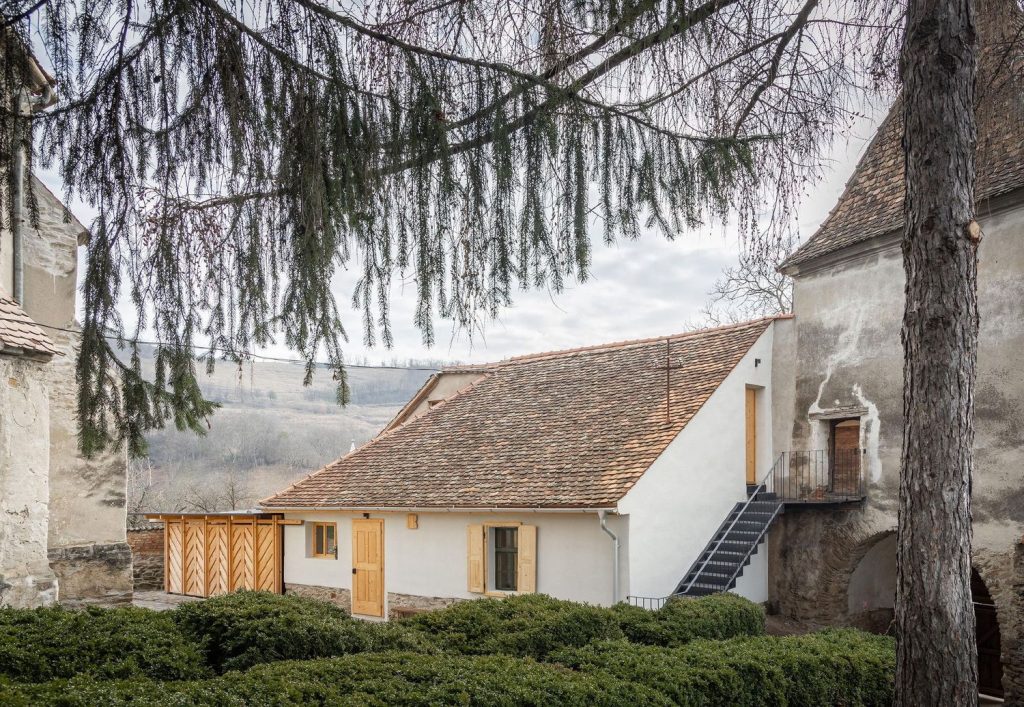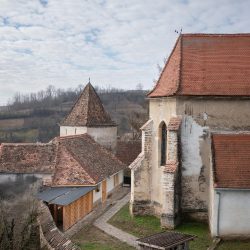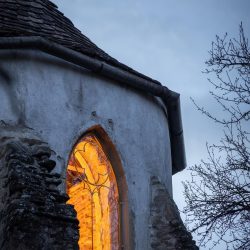
Modul 28 . photos: © Vlad Patru
The Adaptive Reuse program, aimed at fortified churches in Transylvania, broadly refers to adapting the annex constructions within the enclosures for contemporary functions. The initiative is based on the belief that turning heritage buildings into museums does not serve their long-term well-being, especially in the case of secondary importance constructions such as annexes.
The existing situation we faced in the case of the Fortified Church in Curciu is that of an ensemble of three annex buildings: a gate tower, a chapel and a dwelling with two rooms, which currently do not serve a precise function. Only the church has been restored and is open to the public. The fortification is located in an isolated context, avoided by tourists due to the lack of nearby accommodation.
The functional conversion of spaces is a step toward reintegrating them into the community. Consequently, the idea of creating accommodation spaces within the available rooms has taken shape, naturally leading to new spatial requirements.
In order to understand the narrative thread of the intervention at Curciu, a brief explanation of our method of approach is needed. It is based on a natural process: “reading” and understanding the existing context, identifying valuable features and considering the component that brings individuality to the project. We then make decisions regarding which insertions will seamlessly integrate into the context and which will be highlighted through contrast.
Components with historical and artistic value invariably exist in this type of places. In the specific case of Curciu, the main challenge was the integration of the three Gothic windows of the polygonal apse of the chapel, which were partially destroyed. After considering several options, we decided on an approach that preserves the existing form while suggesting the original image. We opted for a thin-profile frame that reconstructs the original design of the window frame through analogy with similar examples.
Beyond the decorative components, historical value also resides in the type of space and its volume. These are aspects we aim to preserve, directly influencing the second approach: enhancing space quality through non-invasive techniques.
The cultural reactivation of the ensemble involves increasing the number of visitors, for which additional spaces will be necessary. The decision to add a temporary construction to the exterior arises from the desire not to alter the volume of the interior spaces.
Our proposal is a pavilion-like structure made of wood, seamlessly integrated with the existing front. Although it fits contextually, it stands out through contrast. By combining an orthogonal structure with precise dimensions and a non-rigid elevation that reveals the elements composing the construction, with the austerity characteristic of medieval masonry architecture, the result dynamically revitalizes the courtyard space through architectural solutions.
The result is a composition that includes both constructions with historical value and elements of new architecture, placed in contrast. The regeneration of the ensemble occurs through architectural tools and addressing the spatial needs dictated by the new function can facilitate the reintegration of the ensemble into the economic, social, and cultural life of the area.
_
























